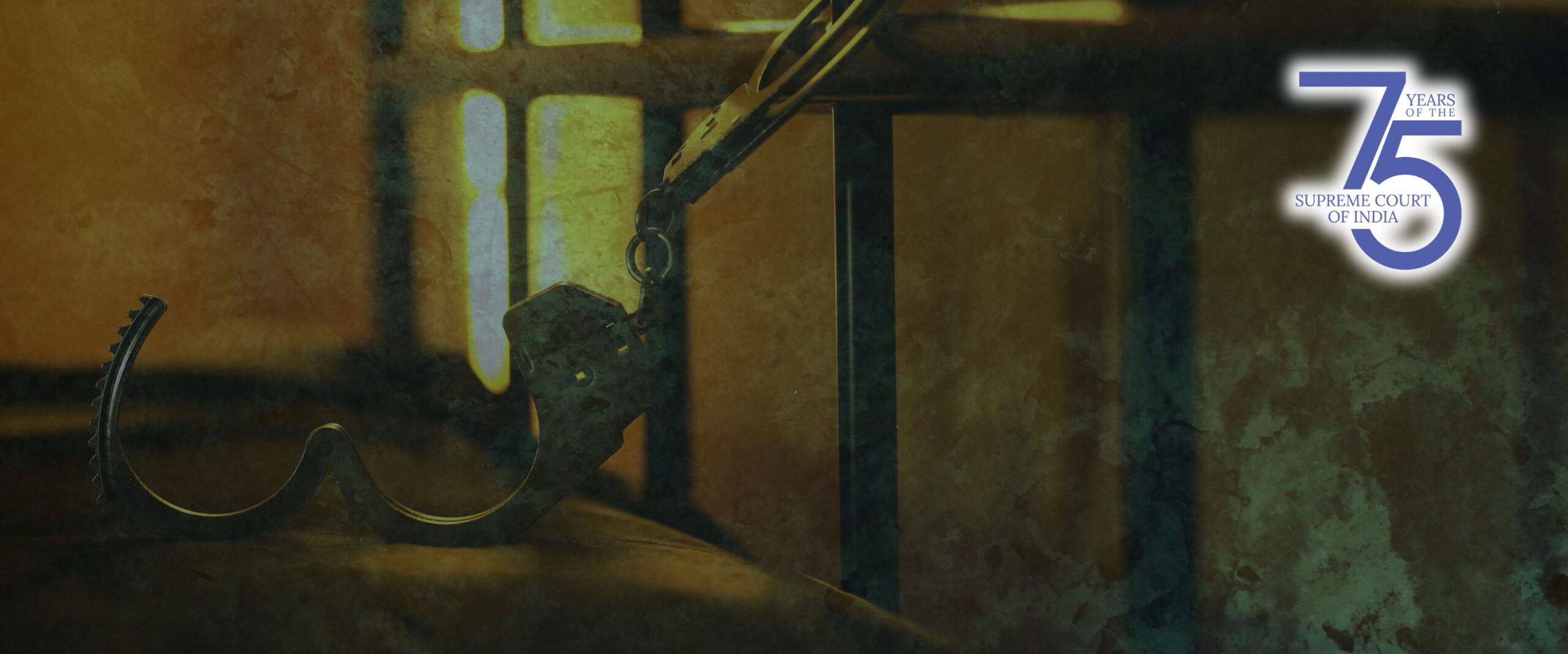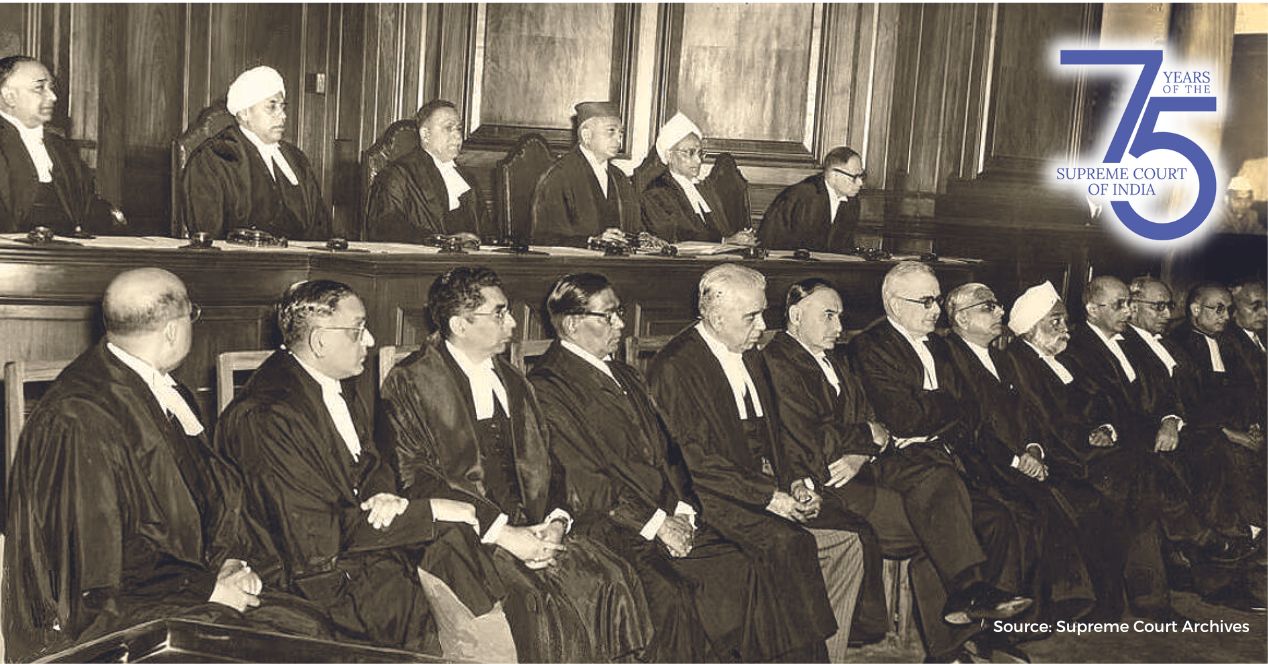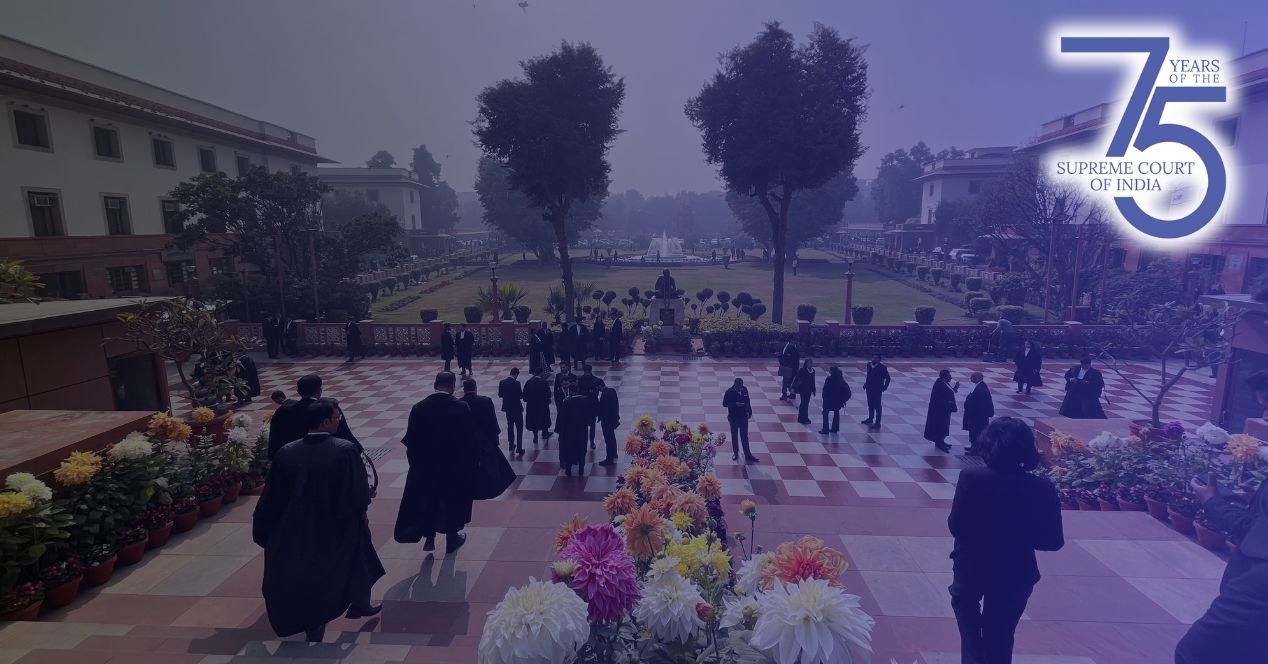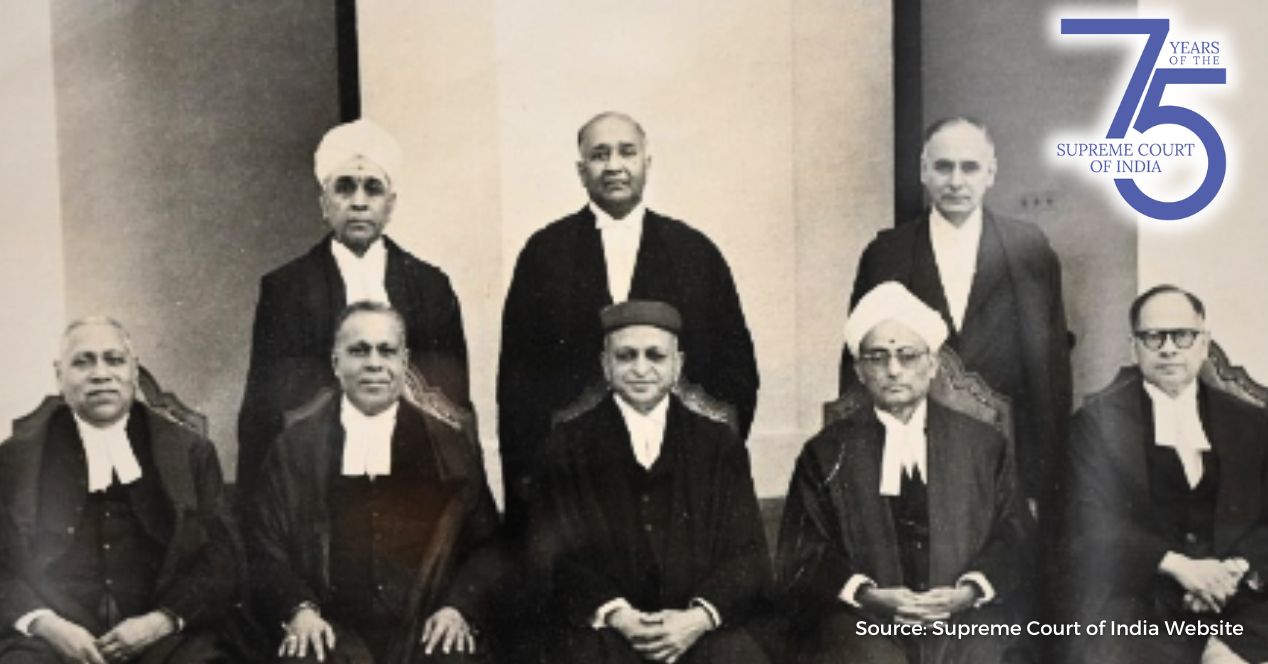How Justice Bhagwati’s 44-year-old dissent mirrors the state of death penalty in India
There has been significant empirical work demonstrating the inefficacy of the death penalty. In its 75th year, the Court must engage with it

In 1980, a majority of four judges upheld the constitutionality of the death penalty in Bachan Singh v State of Punjab. The sole dissenter was Justice P.N. Bhagwati, who wrote only two paragraphs in his opinion, noting that he would provide the reasons for his view on the day the Court reopened after the summer break. However, it took him two years to give those reasons. In the opinion from August 1982, he apologised for the delay, explaining that it was caused by the “considerable mass of material which had to be collected from various sources and then examined and analysed.”
It took its time coming, but the detailed dissent is a classic for the way it emphasised the inherent arbitrariness and inhumanity of the death penalty. In this piece, we argue that four decades since the decision in Bachan Singh, the trajectory of the law and practice on the death penalty and various forms of research on the realities of death row in India, have proved Justice Bhagwati’s concerns to be true.
We focus solely on Bachan Singh in this piece because it is the only time a Constitution Bench of the Supreme Court has engaged with the constitutionality of the death penalty since the enactment of the Criminal Procedure Code (CrPC) in 1973. The 1973 Code had brought about two important developments. It introduced Section 354(3), which prescribed life sentence as the norm and made the death penalty an exceptional punishment. The new provision also required judges to lay down ‘special reasons’ when imposing the death sentence.
The earlier CrPC, which came into effect in 1955, had no preference for a life or death sentence and therefore no requirement for reasons. In the first CrPC, from 1898, death penalty was the default punishment and special reasons were required to be provided for imposing the life sentence.
In addition to the legislative preference for a life sentence, the 1973 Code created the right for the accused to be heard on the question of sentence by introducing Section 235(2). In doing so, it necessitated bifurcation of a trial into the guilt determination and sentencing stages. The Bharatiya Nagarik Suraksha Sanhita which repealed and replaced the 1973 Code in 2024, continues to retain both these provisions. In Bachan Singh, the majority had relied heavily on Sections 354(3) and 235(2) in support of its finding that the death penalty was saved from the vice of arbitrariness.
Inhumane nature of the death penalty
Justice Bhagwati had three primary reasons to hold that the death penalty is a cruel, inhuman and disproportionate punishment. Firstly, unlike other forms of punishment, it is irrevocable. Given the inherent fallibility of the Indian criminal justice system (poor investigation, false or misleading testimonies, risk of wrongful prosecution, lack of adequate scientific techniques), the threat of executing an innocent person cannot be ignored.
Secondly, the entire process of being condemned to death, awaiting execution and the final act of execution involves intense mental and physical suffering, which cannot be constitutionally imposed.
Lastly, this punishment does not advance any “permissible penological goal” and defeats the goal of reformation. Justice Bhagwati observed that there was “no way of accurately predicting or knowing” that a person is incapable of reformation. He found that the imposition of a death sentence as a “denunciation [of wrongdoing] by the community or retribution,” is a facade for seeking revenge, which betrays the values of human dignity. Based on a study of research from various jurisdictions, he strongly disputed the claim that the death penalty has greater deterrent value than life imprisonment.
The Bachan Singh majority held that there were ample procedural safeguards within the justice system which “almost eliminate[d]” the possibility of an innocent person being convicted and executed for a capital offence. However, the data on the number of acquittals and commutation from death row negates this conclusion. As per the Death Penalty India Report released by Project 39A in 2016, out of the 1486 death sentences imposed by trial courts between 2000 and 2015, only 4.9 percent (73 prisoners) were finally upheld. The sentences of 970 prisoners (65.3 percent) were commuted. Almost 30 percent of the prisoners on death row were actually acquitted by the higher courts. These staggering figures depict the scale of erroneous imposition of the death sentence.
The most worrying omission by the majority in Bachan Singh was to uphold the constitutionality of the death penalty without engaging with the issue of the pain and suffering inherent to this punishment. Since 1980, a plethora of credible research has documented and analysed the unique anguish of living on death row. Deathworthy, a report by Project 39A, found an overwhelming mental health crisis among prisoners sentenced to death in India (62.2 percent of the prisoners surveyed had a mental illness; 11 percent suffered from an intellectual disability). The crises are further exacerbated by the abysmal living conditions of prisoners on death row, including solitary confinement, social isolation, lack of work, poor access to education facilities, harassment and discrimination.
While dealing with the constitutionality of the death penalty under Article 21, the majority in Bachan Singh did not consider any research or narratives on the experience of this punishment. It held that the death penalty did not violate the right to life under Article 21 merely on the basis that the Constitution makes several references to the sentence of death, such as in Articles 72(1)(c), 161 and 134. As Justice Bhagwati wrote, such a reading contradicts the foundational idea that our Constitution is a living document, meant to endure and evolve with changing social, economic and political realities. Many progressive changes of the last few decades, including the recognition of the right to privacy, the right to education and the decriminalisation of homosexuality, have been a result of this ‘living document’ approach.
Viewed from the lens of penological purposes, there is growing evidence that the death penalty does not justly meet any ends of punishment. In its 262nd Report published in 2015, the Law Commission of India concluded that the death penalty neither acts as an effective deterrent nor is it justified as a form of retributive revenge. Among other things, the Commission cited the United States’ National Research Council’s 2012 report, which reviewed existing studies on deterrence and the death penalty to conclude that “research to date on the effect of capital punishment on homicide is not informative about whether capital punishment decreases, increases, or has no effect on homicide rates.” Interestingly, a study by Isaac Ehrlich (1975), one of the many critically reviewed by the Council, was used by the majority in Bachan Singh in support of the deterrent effect of the death penalty.
Similarly, as the Law Commission Report also noted, death penalty adjudication in the Supreme Court has indicated the increasing prominence of reformation as a penological goal, despite widespread inconsistency in assessing an individual’s probability to reform. This shift in thinking was unequivocally acknowledged by the Court in Manoj v State of Madhya Pradesh (2022). There, the Court noted that “the criminal is not a product of only their own decisions, but also a product of the state and society’s failing, which is what entitles the accused to a chance of reformation.” This idea reflects the Supreme Court’s long journey towards recognising that a person does not bear the sole moral responsibility for a crime, and may act as the trigger towards formally recognising a right to reformation for all.
(Un)fairness of the death penalty
Another crucial difference between the two opinions in Bachan Singh was related to the supposed safeguards to prevent the incorrect application of the death penalty. Justice Sarkaria, writing for the majority, saw Section 354(3) as “a broad and clear guideline” in the exercise of sentencing discretion. In sharp contrast, Justice Bhagwati found Section 354(3) to do little to address the “unguided standardless discretion” available to judges. According to Justice Bhagwati, special reasons were “bound to vary from judge to judge” and be guided by their “subjective philosophy”.
Similarly, the majority saw Section 235(2) as an additional procedural safeguard which, along with the possibility of errors being rectified by higher courts, led the bench to conclude that “capital punishment…. cannot, by any reckoning, be said to be unfair, unreasonable, and unjust.” But Justice Bhagwati characterised these safeguards as “peripheral” and was of the opinion that they did not address the lack of standards to guide discretion in sentencing.
Justice Bhagwati’s apprehension is confirmed by Project 39A’s report analysing death penalty sentencing in India’s trial courts. In complete contravention of Section 235(2), 36 percent of death sentences in trial courts between 2018 and 2020 were imposed on the same day as conviction, without hearing the accused. 115 of these 306 death sentences were imposed without considering the default life sentence.
A report by Amnesty International and PUCL, published in 2008, demonstrated the problem of arbitrariness, as well as judge-centric and inconsistent reasoning. It analysed all death penalty decisions of the Supreme Court between 1950 and 2006. The findings were corroborated by Project 39A’s recent study analysing decisions between 2007 and 2021.
An opinion-based study by Project 39A, published in 2017, reiterated Bhagwati’s concerns. For Matters of Judgement, 60 former Supreme Court judges were interviewed. One judge who had decided nearly 140 murder cases in 21 years as an appellate judge admitted that “every judge has his own concept of rarest of rare.” Another judge said: “If in my mind I think that a case is rarest of rare, I can write many things to show that. If I think it is not, then I will write things to show it is not. That is the flaw of the formulation. You award death in cases where you think it should be given.”
Curiously, while characterising Section 354(3) as a clear enough guideline, the majority in Bachan Singh took it upon itself to interpret ‘special reasons’ by prescribing a sentencing framework. This framework, which has come to be known as the ‘rarest of rare’, mandates consideration of aggravating and mitigating circumstances of the crime and the accused, in addition to engaging with the accused person’s probability of reformation.
However, in line with empirical research on death penalty sentencing, the Supreme Court has since acknowledged that the judicial journey of the framework has been marked by internal incoherence, subjectivity and arbitrariness. In November 2018, Justice Kurian Joseph’s dissent in Chhannu Lal Verma v State of Chhattisgarh stated that death sentence being “arbitrarily and freakishly imposed” is something that has continued and called for re-examining the “purpose and practice” of death penalty.
In May 2022, the Court in Manoj v State of Madhya Pradesh noted that the safeguard in Section 235(2) was rendered meaningless in the absence of guidelines or framework. As a response to the pervasive absence of arguments around mitigating circumstances before sentencing courts across India, the Court in Manoj called for judges to be “proactive” at sentencing hearings and mandated them to call for jail conduct information, psychiatric evaluations and reports by probation officers.
The decision in Manoj ultimately led the Supreme Court to acknowledge the deficiency in its death penalty jurisprudence in a suo moto writ. It referred the matter to a Constitution Bench. While a five-judge bench remains to be constituted, Project 39A’s research demonstrating poor compliance with the Manoj directives in trial courts does not induce hope that changes in the law will introduce principled sentencing.
This concern isn’t restricted to the lower courts alone. In Manoj Pratap Singh v State of Rajasthan (2022), which was decided by a different bench less than a month after Manoj, the Court bypassed the requirement to call for reports. Such internal incoherence on death penalty sentencing in the polyvocal Supreme Court only goes to show that Justice Bhagwati’s apprehensions were well-founded.
Conclusion
In sum, while the reference to a Constitution Bench has arisen out of contradictions and defects in the sentencing framework, it is an opportune moment for the Supreme Court to take a fresh look at the constitutionality of the death penalty after 44 years.
Firstly, there is rich empirical data available on the administration of the death penalty, which corroborates Justice Bhagwati’s concerns. Secondly, the Court’s own journey with the ‘rarest of rare’ framework since Bachan Singh is ridden with incoherence and subjectivity. Thirdly, the evolution of the constitutional framework in the last four decades makes it the right time for the Court to engage with all aspects of the death penalty.
And, finally, engaging deeply with the death penalty question would be an apt way for the Court to remind itself of the promise the first Chief Justice made on its behalf 75 years ago—to interpret the Constitution with “an enlightened liberality.”
Shreya Rastogi is Director (Death Penalty Litigation) and Neetika Vishwanath is Director (Sentencing) at Project 39A at National Law University, Delhi.




